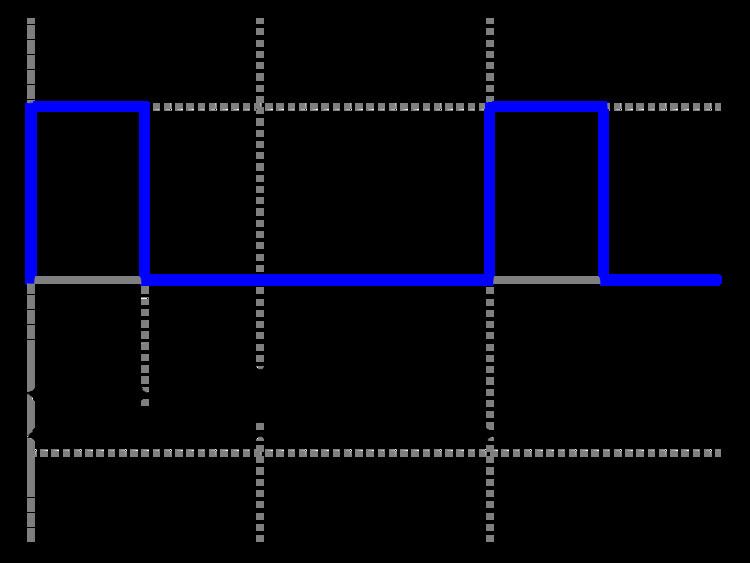 | ||
In music and music theory, the pulse consists of beats in a (repeating) series of identical yet distinct periodic short-duration stimuli perceived as points in time occurring at the mensural level. "This pulse is typically what listeners entrain to as they tap their foot or dance along with a piece of music (Handel, 1989), and is also colloquially termed the 'beat,' or more technically the 'tactus' (Lerdahl & Jackendoff, 1983)."
Contents
Definitions
The pulse may be audible or implied. The tempo of the piece is the speed of the pulse. If a pulse becomes too fast it would become a drone; one that is too slow would be perceived as unconnected sounds. When the period of any continuous beat is faster than 8–10 per second or slower than 1 per 1.5–2 seconds, it cannot be perceived as such. "Musical" pulses are generally specified in the range 40 to 240 beats per minute. The pulse is not necessarily the fastest or the slowest component of the rhythm but the one that is perceived as basic. This is currently most often designated as a crotchet or quarter note when written (see time signature).
Pulse groups
While ideal pulses are identical, when pulses are variously accented, this produces two- or three-pulse pulse groups such as strong-weak and strong-weak-weak and any longer group may be broken into such groups of two and three. In fact there is a natural tendency to perceptually group or differentiate an ideal pulse in this way. A repetitive, regularly accented pulse-group is called a meter.
Pulses can occur at multiple metric levels - see figure. Pulse groups may be distinguished as synchronous, if all pulses on slower levels coincide with those on faster levels, and nonsynchronous, if not.
An isochronal or equally spaced pulse on one level that uses varied pulse groups (rather than just one pulse group the whole piece) create a pulse on the (slower) multiple level that is non-isochronal (a stream of 2+3... at the eighth note level would create a pulse of a quarter note+dotted quarter note as its multiple level).
